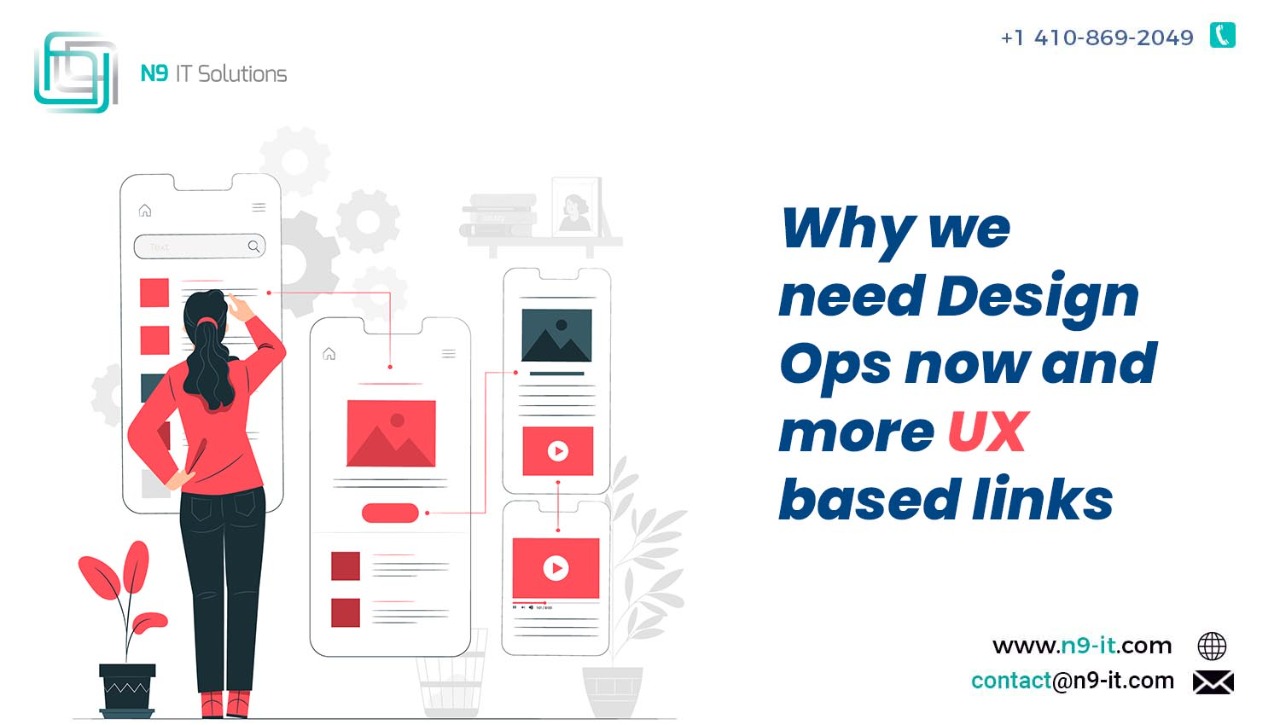Why we need Design Ops now and more UX based links
Introduction
DesignOps is to support the design team in alignment with the customer-centric vision of the organization:
- Design Ops starts with a focus on humans, our customers. When designers have the tools and processes to respond to the customer—and the permission to look to the future—those teams deliver on a meaningful vision that sustains deep customer relationships over time.
- Meaningful customer experiences are where the rubber meets the road. The products and services designers help create support how a customer feels across the journey engaging with various touchpoints and interactions within an organization. Delivering great experiences is the entire point.
Fostering UX UI on a DevOps Environment Based Culture
Why Design Ops Matters Now
Shifts are happening in the way designers work and interact with each other and other teams, and these shifts are shining a light on the necessity of DesignOps.
In many ways, designers have won the fight to be “at the table.” More and more, we are part of broad, strategic conversations, and many organizations don’t need to be convinced of the value of design anymore. They get it.
Unfortunately, this recognition often means that we must manage the additional workload of being involved in strategic work alongside our “day jobs” of designing and researching. In short: Designers are often too busy to design.
Couple this reality with the fact that designers are wrangling more complex contexts than ever before: As many organizations embrace embedded product- or project-specific team models, there is a growing lack of connection among designers who are spread across those teams. The products and experiences we design continue to become more elaborate, and teams are often dispersed across locations; as a result, workflows and decision making are increasingly distributed.
In order to manage rapidly escalating design complexities, we need to scale design by applying our own design-thinking and user-centered methods to design processes.
Components of Design Operations
DesignOps is an intentionally broad topic, because there are many elements related to enabling consistent, quality design.
I like to think of DesignOps a bit like a curated potluck dinner. There are a lot of components within DesignOps, and what an organization chooses to select — or to pass on — should depend on the current needs and most poignant painpoints of that organization. So, the shape of DesignOps will and should look very different from one organization to the next. And the focus of DesignOps within a single organization might shift as challenges evolve or change over time.
The Phases of Design Ops
Here is the comprehensive DesignOps menu the universe of elements that organizations might choose to focus on when planning and implementing processes to support designers. There are three main areas:
- How we work together
- How we get our work done
- How our work creates impact
Ux based links
Links perhaps is the most frequently used element as clicking them is a major way to explore in the Internet world. With a link, users can easily navigate through web pages, that explains why Tim Berners-Lee described the drawn of the web world as “documents and links”.
In this article, we will discuss how to design usable links to deliver fluid experiences.
Types of Links
- Navigation links/Hyperlinks are used to navigate to another page, section without initiating a new task.
- Command links/Text buttons perform a new command, usually used for less important commands.
- Definition/Help links provide more useful information for terms or terminologies.
- Homelinks allow users to navigate back to the homepage by clicking the site logo and it has become a must-have on websites.
Who “Does” DesignOps?
Anyone can do DesignOps. There are two approaches to thinking about DesignOps that help you determine how to approach it within your organization: DesignOps the Role and DesignOps the Mindset.
Career Aspects
DesignOps the Role means that there is a specific person or group of people tasked with ensuring that the design team is supported so that it can focus on designing or researching. In more mature practices, common DesignOps roles are:
- Design producers or UX producers: People concerned with project-level design operations
- Design program managers or UX program managers: People tasked with program- or organization-level design operations
- ResearchOps specialists: People responsible for owning the operational aspects of user research, such as sourcing and screening participants, overseeing the research-request pipeline, maintaining a research repository, and managing research tools, spaces and equipment.
Conclusion
Not every organization needs DesignOps the Role. Very large teams, embedded teams, or agencies with short timelines and lots of moving parts may need DesignOps .
Scope @ N9 IT Solutions:
- N9 IT Solutions is a leading IT development and consulting firm providing a broad array of customized solutions to clients throughout the United States.
- It got established primarily with an aim to provide consulting and IT services in today’s dynamic environment.
- N9 IT also offers consulting services in many emerging areas like Java/J2ee, Cloud Computing, Database Solutions, DevOps, ERP, Mobility, Big Data, Application Development, Infrastructure Managed Services, Quality Assurance and Testing.

